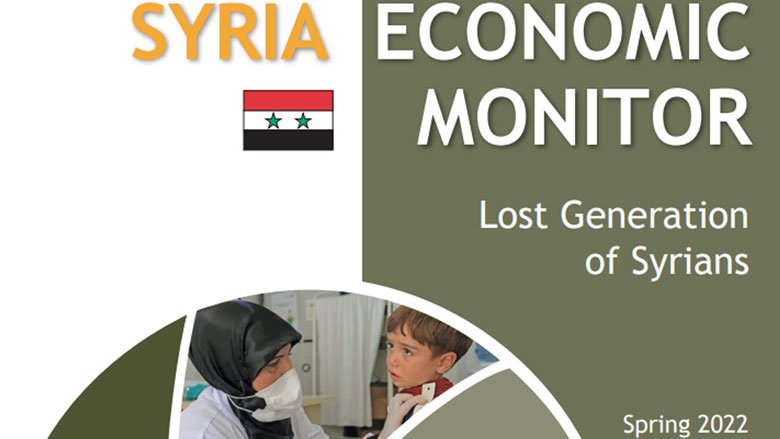The Syria Economic Monitor is a new semi-annual economic publication of the World Bank. It aims to provide an update on key economic developments, outlook, risks, and policies in Syria and situate them in the conflict context. It also presents findings from the World Bank’s recent analytical work in Syria. The Syria Economic Monitor is part of a more general effort at the World Bank to better understand economic and social dynamics in fragile, conflict, and violence (FCV) settings.
Now moving into its twelfth year, the conflict in Syria has inflicted a devastating impact on the inhabitants and the economy. The conflict accelerated infrastructure depreciation by damaging strategic assets (the destruction channel) and deepened demographic aging by displacing many people (the displacement channel). In addition, the conflict eroded social cohesion, degraded governance, and led the division of the previously integrated areas in Syria (the disorganization channel). Together, these channels have halved the size of economic activity between 2010 and 2019.
Conflict, displacement, and the collapse of economic activities have all contributed to the decline in household welfare. Extreme poverty has consistently risen since the onset of the conflict, reflecting deteriorating livelihood opportunities and the progressive depletion of household coping capacity. Syria’s high inflation has affected the poor and vulnerable disproportionately. Beyond the immediate impact of the conflict, the economy suffers from the compounding effects of the pandemic, adverse weather events, regional fragility, and macroeconomic instability.
Economic conditions in Syria are projected to continue to be mired by prolonged armed conflict, turmoil in Lebanon and Turkey, COVID-19, and the war in Ukraine. Subject to extraordinarily high uncertainty, we project that Syria’s real GDP will contract by 2.6 percent in 2022 (to US$ 15.5 billion in constant 2015 prices) after declining by 2.1 percent in 2021. Risks to the growth outlook are significant and tilted to the downside.
The Special Focus section of the Syria Economic examines the demographic and labor market consequences of the conflict. The Syrian population exhibits a male deficit in prime-age adult population and an increase in female labor force participation as a result of the deterioration in economic conditions, notwithstanding the challenges women continue to face in access to equal economic opportunities.
- Syria Economic Monitor, Spring 2022 : Lost Generation of Syrians (Full Report in a PDF Format)


